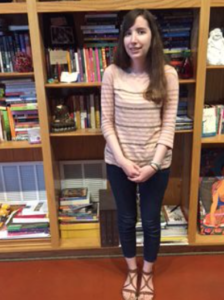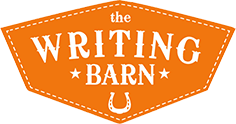In Media Res: Where Does A Story Begin?
#WBReflects by Jillee Sexton

We probably don’t talk about it often enough, but it’s always there, the thing some of us never want to think about: the middle of a story. For some people, myself included, the beginning and end of a project—whether it be a short story, poem, or novel—comes much easier than everything in between. I always get excited about a new idea. I usually know how it’s going to start and where it will end, but the middle tends to be this vague creature floating in the background that I’m forced to confront once I’ve gotten past the preliminaries. My latest project, in particular, felt off somehow. I began to look into what I could do to kickstart it. How could I make it more exciting? After a bit of research magic, I discovered a marvelous concept: in media res.
In media res translates from Latin to “into the middle of things.” Most of the time, writers use this to drop the reader right into the action of the story rather than beginning chronologically. We can see examples of this in books (The Odyssey) as well as film (Pulp Fiction). For those familiar with anime, Fullmetal Alchemist also employs this technique, and quite successfully too.
If you don’t know whether you should begin in the middle, consider where you want your story to go. How important is your chronological timeline? How big is the timeline? If your story takes place in two times, like mine, which time is key to your plot? In my story, for example, the two settings are separated by a decade. Past events are told through memory and reflection and they only exist to explain the current state of the main character. The beginning of every story is not always “the beginning.” In my case, the narrative technically starts in the middle because the character’s story truly begins a decade before the narrative.
Sound convoluted and confusing? If that’s the case, make a timeline. Plot the life of your central character, including every important detail, then go back and mark where their story “begins.” If you don’t know whether you should begin in the middle, try starting from that beginning point on your timeline first. Does it feel slow, sort of stilted, when you write from that point? If you find that’s the case, try beginning in the middle instead.
You might be wondering why I brought up film in a writing post. Here’s what I’ve found. Film is really just another form of writing. Films and TV shows have scripts. If you’re struggling to begin in the middle—say you’re trying to incorporate flashbacks—consider looking at scripts for ideas. A script is simply a blueprint for a film and to a degree, the skeleton of a fully-fledged novel (with some obvious adjustments). Films also tend to use this technique more often than books, simply because they need to catch the attention of the audience as quickly as possible.
It’s best when looking into various narrative techniques and especially for a nonlinear narrative such as this, that you expand your perspective and look at multiple mediums of storytelling. I’ve had the most success looking at books and films that use nonlinear narratives as well as those that relate on some level to the story I’m trying to tell.
 Ultimately, you can’t know if you want to start in the middle until you ask yourself the hard questions and try it. Sometimes it works, sometimes it doesn’t. If at first you don’t succeed, try, try again.
Ultimately, you can’t know if you want to start in the middle until you ask yourself the hard questions and try it. Sometimes it works, sometimes it doesn’t. If at first you don’t succeed, try, try again.
Jillee Sexton is studying Creative Writing and History at St. Edward’s University. She enjoys writing and reading within the fantasy and historical fiction genres and wants to write a novel that encompasses those passions. She also recently started writing screenplays and discovered that it’s fun and hopes to maybe one day do something in that field. When she’s not writing she likes to play with her cat, Lucee, and take long afternoon naps.
